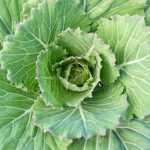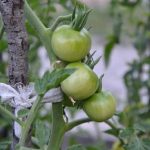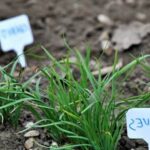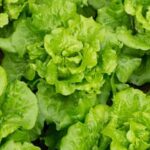Barrel gardening has become an increasingly popular method for growing vegetables in limited spaces. Whether you have a small balcony, a rooftop terrace, or even just a tiny backyard, barrel gardening offers a practical solution for cultivating your own fresh produce. By utilizing barrels as planters, you can create a vertical garden that maximizes space while providing optimal growing conditions for a variety of vegetables.
The concept behind barrel gardening is simple yet innovative. Instead of traditional in-ground planting, vegetables are grown in large barrels filled with soil and compost. This allows you to have complete control over the growing environment, ensuring that your plants receive adequate sunlight, moisture, and nutrients within the confined space.
One of the major benefits of barrel gardening is its versatility. Not only can it be adapted to fit any size or shape of space, but it also allows for easy mobility. You can move your barrel garden around as needed to take advantage of different sunlight or temperature conditions throughout the day or season.
In our comprehensive guide to barrel gardening vegetables, we will explore the various aspects involved in successfully growing vegetables in barrels. From choosing the right size and material for your barrels to selecting suitable vegetable varieties and implementing proper planting techniques, we will provide you with all the information you need to start your own thriving barrel garden.
So let’s dive in and discover how this convenient and space-saving gardening method can transform small spaces into bountiful vegetable gardens.
Choosing the Right Barrel
Size Matters
When it comes to barrel gardening, choosing the right size of barrel is crucial for the success of your vegetable garden. The size of the barrel will directly impact the growth and development of your plants, so it’s essential to consider several factors.
Firstly, consider the space you have available for your barrel garden. If you have limited space, opt for smaller barrels that can easily fit into your desired location. However, if space is not an issue, larger barrels can provide more room for root development and allow you to grow a greater variety of vegetables.
Secondly, think about the type of vegetables you want to grow in your barrel garden. Some plants require more space and deeper soil to thrive, while others can tolerate cramped conditions with shallow roots. For instance, root crops like carrots and potatoes need deeper barrels that allow their roots to penetrate and expand comfortably.
Lastly, don’t forget about drainage. Good drainage is critical for the health of your plants since excess water can lead to root rot and other problems. Ensure that your chosen barrel has sufficient drainage holes or consider adding them yourself during the preparation stage.
Best Materials for Barrel Gardening
In addition to size considerations, choosing the right material for your barrel is equally important. Fortunately, there are various options available in terms of material, each with its own advantages and disadvantages.
One popular choice is food-grade plastic barrels as they are lightweight, cost-effective, and readily available. Plastic barrels also retain moisture well but may require extra care during hot summers to prevent overheating of the roots.
Another option is wooden barrels, which add a rustic charm to any garden setting. Wood provides good insulation against temperature changes but may require regular maintenance such as sealing or staining to prevent rotting.
Metal barrels should be avoided as they can heat up quickly under direct sunlight and potentially harm plant roots.
It’s also worth considering recycled or upcycled barrels, as they not only contribute to sustainability but can also add a unique aesthetic appeal to your garden.
Remember, the choice of barrel material ultimately depends on your personal preferences, budget constraints, and availability. No matter what material you select, ensure that it is sturdy and safe for growing vegetables.
Preparing the Barrel
Once you have chosen the right barrel for your vegetable garden, it is important to properly prepare it before planting. This section will provide you with step-by-step instructions on how to prepare your barrel for planting.
1. Cleaning the Barrel:
Before starting the preparation process, ensure that the barrel is clean and free from any debris or residue. Rinse out the barrel with water and scrub away any dirt or grime using a brush or sponge. Make sure to thoroughly rinse off any soap residue as well. Cleaning the barrel will create a healthy environment for your plants and prevent the growth of harmful bacteria.
2. Drilling Drainage Holes:
Good drainage is essential for success in barrel gardening. Without proper drainage, excess water can accumulate in the bottom of the barrel, leading to root rot and other problems. To avoid this, drill several evenly spaced drainage holes in the bottom of the barrel using a drill and a ¼ inch drill bit. Aim to have at least four to six holes for adequate drainage.
3. Adding Necessary Amendments:
To provide your vegetables with optimal growing conditions, it is important to add necessary amendments to the soil in your barrel. Start by filling one-third of the barrel with high-quality potting soil or a mixture specifically designed for container gardening. This ensures that your plants receive essential nutrients and have good access to water and air.
Next, consider adding organic compost or well-rotted manure to enrich the soil further. These organic materials increase fertility levels and improve soil structure, promoting healthy plant growth. Mix these amendments into the potting soil thoroughly.
Finally, depending on your specific vegetable requirements, you may need to adjust pH levels by adding lime or sulfur accordingly. Some vegetables prefer slightly acidic soil while others thrive in more alkaline conditions.
By carefully following these step-by-step instructions, you will be able to prepare your barrel for planting vegetables successfully. Preparing the barrel properly ensures that your plants have a healthy growing environment, adequate drainage, and essential nutrients to thrive.
Selecting the Best Vegetables for Barrel Gardening
When it comes to barrel gardening, choosing the right vegetables is key to a successful and bountiful harvest. Due to the limited space in barrels, certain factors like size, root depth, and sunlight requirements must be considered when selecting which vegetables to grow. Fortunately, there is a wide variety of vegetables that can thrive in barrel gardens, providing abundant yields for even the most novice gardener.
One popular choice for barrel gardening is salad greens. Varieties such as lettuce, spinach, arugula, and kale are fast-growing crops that do well in containers. These leafy greens have shallow root systems and can be harvested on a cut-and-come-again basis, allowing for continuous production throughout the growing season.
Another vegetable that flourishes in barrel gardens is the tomato. With compact determinate varieties like ‘Roma’ or ‘Patio’, you can enjoy juicy tomatoes without needing extensive garden space. Remember to provide sturdy support for your tomato plants as they tend to produce heavy fruit.
For those looking to add some vibrant color and flavor to their meals, peppers are an excellent choice for barrel gardening. Bell peppers or chili peppers like ‘Jalapenos’ or ‘Cayenne’ thrive in containers and require full sun exposure for optimal growth.
In addition to these staples, other vegetables that can be successfully grown in barrel gardens include radishes, carrots (choose shorter varieties), beans (bush types), peas (dwarf varieties), herbs like parsley or basil (great additions for culinary enthusiasts), and even small-rooted crops like onions or garlic.
Remember that regardless of the vegetables chosen, it’s important to consider their individual needs regarding sunlight and water requirements. Most vegetables prefer at least 6 hours of direct sunlight daily, so ensure that your barrels are placed accordingly.
By carefully selecting the best vegetables for barrel gardening based on their size, root depth, and sunlight requirements, you can maximize your yield and enjoy a thriving garden full of delicious and nutritious homegrown produce.
Planting Techniques
When it comes to planting vegetables in a barrel garden, there are certain techniques that need to be followed for optimal growth and yield. The first consideration is the spacing between plants. It is important to give each vegetable enough room to grow and access to sunlight and nutrients.
As a general rule, small-sized plants, such as lettuce or radishes, should be spaced about 4-6 inches apart. Medium-sized plants, like tomatoes or peppers, should be given approximately 8-10 inches of space between them. For larger vegetables such as zucchini or cucumber, a spacing of 12-18 inches is recommended.
The next aspect to consider is the planting depth. The depth at which you plant your vegetables will depend on their specific needs. As a general guideline, shallow-rooted plants like herbs and lettuce only require about 6 inches of soil depth. On the other hand, deep-rooted vegetables like carrots or potatoes may need up to 12-18 inches of soil depth. Be sure to research the specific requirements for each vegetable you plan on growing.
Proper watering is crucial for the success of any garden, including barrel gardens. While it is important not to overwater or underwater your plants, it can be challenging to strike the right balance due to the limited space in a barrel garden. One helpful technique is to water deeply but infrequently.
This means thoroughly saturating the soil until water starts draining from the bottom drainage holes and then allowing it dry out slightly before watering again. It’s also important to monitor moisture levels by sticking your finger into the soil; if it feels dry down to your second knuckle, it’s time to water.
By following these planting techniques – providing adequate spacing between plants based on their size, considering appropriate planting depths for each vegetable variety, and mastering the art of proper watering – your barrel garden is sure to thrive and produce an abundance of healthy vegetables.
Maintenance and Care
Maintaining a healthy barrel garden is key to ensuring the success of your vegetable crops. By following the proper maintenance and care routines, you can maximize the yield of your barrel garden and keep your plants thriving throughout the growing season. Here are some essential tips for maintaining a healthy barrel garden:
- Watering schedules: Regular and consistent watering is crucial for the health of your vegetables in a barrel garden. The frequency of watering will depend on factors like weather conditions and the type of vegetables you are growing. As a general rule, check the moisture level of the soil by sticking your finger about an inch deep into it.
If it feels dry at that depth, it’s time to water. Avoid overwatering as it can lead to root rot. - Fertilization: Providing adequate nutrients to your plants is essential for their growth and productivity. Barrel gardens require regular fertilization since the limited space restricts access to additional nutrients from the surrounding soil. Use organic fertilizers or compost to add nutrients back into the soil periodically according to the specific requirements of each vegetable.
- Pruning: Regular pruning helps promote better air circulation and light penetration within your barrel garden, reducing the risk of fungal diseases and allowing for healthier plant growth. Remove any dead leaves or stems promptly, as they can attract pests or harbor diseases.
- Pest control: Preventing pests from invading your barrel garden is vital in order to protect your vegetable crops. Inspect your plants regularly for signs of pests such as aphids or caterpillars. Consider using natural pest control methods like organic insecticides or introducing beneficial insects like ladybugs or lacewings that feed on harmful pests.
- Disease prevention: Keeping diseases at bay is essential in maintaining a healthy barrel garden. To prevent common diseases like powdery mildew or fungal infections, ensure proper air circulation around your plants by spacing them appropriately. Avoid overhead watering, as it can encourage the growth of diseases. If you notice any signs of disease, promptly remove and dispose of infected plant material to prevent further spread.
By following these maintenance and care practices, you can keep your barrel garden healthy and productive throughout the growing season. Regular monitoring of your plants and addressing any issues promptly will help ensure successful vegetable cultivation in your barrel garden.
Harvesting and Yield
One of the most rewarding aspects of barrel gardening is enjoying the bountiful harvest of fresh, homegrown vegetables. Understanding the timeline for harvesting vegetables from your barrel garden is essential to ensure that you pick them at their peak ripeness. Additionally, employing proper harvesting techniques can help maximize your yield and encourage continuous vegetable production throughout the growing season.
The harvest timeline for vegetables in a barrel garden varies depending on the specific plant. Below is a list of common vegetables grown in barrel gardens, along with an estimated timeline for harvesting:
- Tomatoes: Harvest when they are fully colored and slightly soft to touch. This typically occurs around 60 to 80 days after transplanting.
- Peppers: Pick when they have reached their desired color and have a firm texture. The time to harvest depends on the pepper variety, but it ranges from 60 to 90 days.
- Cucumbers: Harvest when they have reached their mature size but are still firm. Most cucumber varieties can be harvested around 50 to 70 days.
- Lettuce: Begin picking outer leaves as soon as they reach a suitable size. For leaf lettuce, this can be done as early as four weeks after planting.
- Herbs: Harvest herbs like basil, parsley, and cilantro by snipping off individual leaves or stems once they have grown enough.
To maximize your yield and encourage continuous vegetable production in your barrel garden, it’s important to follow proper harvesting techniques:
- Regularly inspect your plants for ripe vegetables. Be gentle during the harvest process to avoid damaging other fruits or plants nearby.
- Use sharp pruning shears or scissors when cutting fruit or gathering larger yields like lettuce heads.
- When picking tomatoes and peppers, gently twist or cut the stem above the fruit rather than pulling it off, which can damage the plant.
- Harvest leafy greens by cutting outer leaves about an inch above the soil surface. This allows for regrowth and continued harvests.
- Keep track of your harvesting activities, noting what vegetable varieties performed well and when they were harvested. This information will guide future planting decisions and help maximize productivity in subsequent barrel gardens.
By being mindful of the proper harvest timeline and employing these tips, you can enjoy a plentiful yield from your barrel garden throughout the growing season. Experiment with different vegetables, observe their growth patterns, and adjust your techniques accordingly to optimize the productivity of your barrel garden.
Troubleshooting Common Issues
Nutrient Deficiencies
One common challenge that gardeners may encounter in barrel gardening is nutrient deficiencies in their plants. Because the space and soil in a barrel are limited, it can be difficult for plants to obtain all the necessary nutrients they need to thrive. The lack of nutrient availability can result in stunted growth, yellowing leaves, and poor fruit production.
To address this issue, it is important to regularly fertilize your barrel garden with a balanced and organic fertilizer. This will help replenish the nutrients that may become depleted over time. Additionally, incorporating compost into the soil mixture when preparing the barrel can provide an extra boost of nutrients.
Over/Under-Watering
Proper watering is crucial for the success of any garden, including barrel gardens. Over-watering can lead to root rot and other water-related diseases, while under-watering can cause stress and dehydration in plants. The key is to find a balance and provide your plants with consistent moisture levels.
To avoid over-watering, ensure that your barrel has proper drainage holes so excess water can escape easily. It is also important to monitor the moisture level of the soil by sticking your finger about an inch deep into the soil – if it feels dry at that depth, it’s time to water again.
However, be cautious not to underwater as well; check your plants regularly for signs of wilting or drooping leaves as these are indications that they need more water.
Pests and Diseases
Just like any other type of gardening, barrel gardens are susceptible to pests and diseases. Common pests that may invade your barrels include aphids, slugs, snails, and caterpillars. These pests can chew on leaves or fruits and damage your crops. To control pest infestations organically, you can use remedies such as neem oil spray or companion planting with insect-repellent herbs.
Diseases, such as powdery mildew or fungal infections, can also occur in barrel gardens. To prevent diseases, ensure proper air circulation by spacing your plants adequately and avoid over-watering. Additionally, removing affected leaves or fruits promptly and disposing of them properly can help minimize the spread of diseases in your barrel garden.
By being aware of these common issues and using effective solutions, you can troubleshoot any challenges that may arise in your barrel garden. With a little knowledge and some hands-on experience, you will be able to maintain a healthy and productive barrel garden all year round.
Success Stories and Inspiration
One of the most rewarding aspects of barrel gardening is hearing success stories from experienced gardeners who have embraced this method. These stories not only provide inspiration for beginners but also showcase the wide variety of vegetables that can be cultivated in barrels. From seasoned hobbyists to urban dwellers with limited space, people from all walks of life are discovering the joys and benefits of growing their own vegetables in barrels.
One success story comes from Sarah, a busy working professional who was determined to grow fresh vegetables despite living in an apartment with no backyard. She decided to try barrel gardening and was amazed by her bountiful harvests.
Sarah carefully selected a variety of compact vegetables that thrive in confined spaces such as cherry tomatoes, lettuce, and herbs like basil and chives. Not only did she enjoy the convenience of having her own mini-garden just steps away from her kitchen, but Sarah also found great joy and satisfaction in tending to her plants and experiencing the pride of harvesting homegrown produce.
Another inspiring success story is that of David, who transformed his small balcony into a flourishing garden oasis through barrel gardening. As an avid gardener with a passion for sustainability, David was eager to find ways to reduce his carbon footprint and grow his own food. With limited space and poor soil quality, he turned to barrel gardening as a solution.
Using a combination of large barrels and smaller containers placed strategically on his balcony, David was able to grow an impressive array of vegetables including peppers, zucchini, and cucumbers. He even experimented with trellising techniques to make the most efficient use of vertical space.
These success stories highlight not only the range of vegetables that can be grown in barrels but also the adaptability of this gardening method to various living situations and skill levels. Whether you have a small balcony or a spacious backyard, barrel gardening offers an accessible way to cultivate your own vegetables regardless of your experience level or available space.
So why not join the growing community of barrel gardeners and begin your own success story? Start small, choose vegetables that suit your needs, and soon you’ll be reaping the rewards of fresh, homegrown produce right from your own barrels.
Conclusion
In conclusion, barrel gardening for vegetables offers numerous benefits and is a convenient and space-saving gardening method that anyone can embrace. The concept of barrel gardening allows individuals with limited spaces to grow their own fresh produce, even in urban environments or small yards. By utilizing barrels, gardeners can maximize their available space and create a thriving vegetable garden.
One of the key benefits of barrel gardening is the ability to choose the right size and material for optimal plant growth. The selection of the appropriate size and material ensures that vegetables have enough room to spread their roots and access adequate nutrients and water. Additionally, preparing the barrel properly by cleaning it, drilling drainage holes, and adding necessary amendments sets a strong foundation for successful planting.
When selecting vegetables for barrel gardens, it is crucial to consider factors such as size, root depth, and sunlight requirements. By choosing vegetables that are well-suited for barrel gardens, gardeners can maximize yield and ensure healthy plants. Proper planting techniques, including spacing, depth, and watering needs tailored to each vegetable type in a barrel garden environment will further contribute to successful growth.
Maintenance and care play significant roles in maintaining a healthy barrel garden. Proper watering schedules, fertilization, pruning techniques for optimal plant growth, as well as robust pest control measures are essential for preventing diseases from taking hold. Harvesting techniques also influence yield; therefore adopting appropriate methods will allow gardeners to enjoy the fruits of their labor fully.

If you’re looking to get into vegetable gardening, or are just looking for some tips on how to make your current garden better, then you’ve come to the right place! My name is Ethel and I have been gardening for years. In this blog, I’m going to share with you some of my best tips on how to create a successful vegetable garden.





